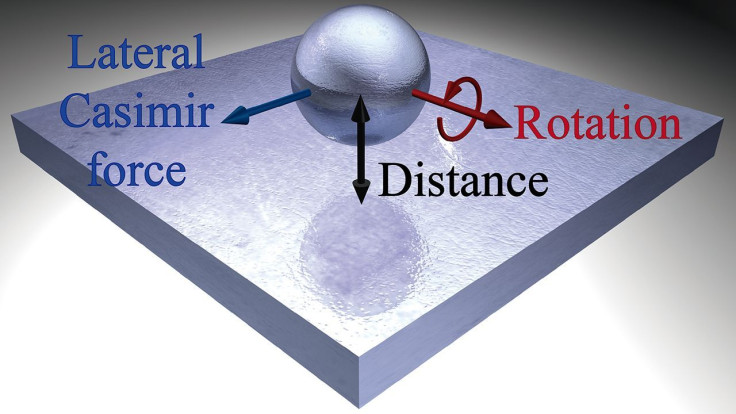Researchers Study Casimir Effect On Nanoparticles Rotating Near A Flat Surface In Vacuum

In the quantum realm, nothing is nothing. Even “empty” space, when we shrink down to the weird world where the laws of quantum mechanics reign supreme, is not really empty, but is filled with virtual particles constantly popping in and out of existence and tiny electromagnetic fluctuations.
These tiny electromagnetic fluctuations can interfere with the activity of subatomic particles and produce a measureable force on objects. This phenomenon, known as Casimir Effect, was first predicted by the Dutch physicist Hendrick Casimir in 1948, and was first measured in 1996.
Now, in a study published in the latest edition of Physical Review Letters, a team of researchers has shown that this force is stronger than previously thought. The study, which focused on developing an analytical expression for the lateral Casimir force experienced nanoparticles, could help scientists and engineers develop better nanoscale objects and circuits.
“These studies are important because we are developing nanotechnologies where we’re getting into distances and sizes that are so small that these types of forces can dominate everything else,” study lead author Alejandro Manjavacas from the University of New Mexico said in a statement. “We know these Casimir forces exist, so, what we’re trying to do is figure out the overall impact they have very small particles.”
For the purpose of their study, Manjavacas and his colleagues studied nanoparticles rotating near a flat surface. Normally, for a sphere to experience a lateral force, it would need to be in contact with the surface, and friction between the sphere and the surface would create lateral movement. However, when the researchers observed the nanoparticles, they found that Casimir effect caused these nanoparticles to move laterally.
Moreover, the researchers also discovered that the direction of the force can be controlled by changing the distance between the particle and surface.
“The nanoparticle experiences a lateral force as if it were in contact with the surface, even though is actually separated from it,” Manjavacas said. “It’s a strange reaction but one that may prove to have significant impact for engineers.”
© Copyright IBTimes 2024. All rights reserved.





















